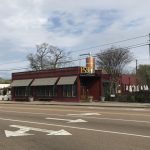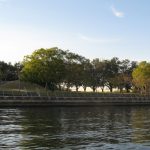San José, with a population of more than 1 million and the tenth largest city in the nation, is the largest and most urban city in the 1.9-million Silicon Valley metropolitan area, and plays an increasingly important role in the continuing growth of the regional, state, and national economies. San José has an impressive array of companies from stellar Fortune 100 and 500 companies, as well as many entrepreneurial startups. However, San José is the only US city of more than half-a-million people that functions as a bedroom community rather than as a true urban center, as more residents leave for work in other cities than workers commute into San José.
Only 15% of the city is designated for employment uses. This imbalance and conversion of previous industrial lands over time for non-employment generating uses has led to significant fiscal, economic and environmental misalignments and quality of life challenges, both for San José and for the Silicon Valley and Bay regions, over the past three decades.
To facilitate job growth, visionary leaders designated large swaths of land in North San José and south San José for campus industrial, office/R&D and manufacturing purposes in the 1980’s. To further achieve a better balance and secure a more sustainable economic foundation, the City’s General Plan, Envision San José 2040, continues to recognize North San José as a premier employment center. North San José is the largest employment district at approximately 4,850 acres, because of its proximity to regional transportation infrastructure, including Norman Y. Mineta San José International Airport, an existing light rail line, and accessibility to several major freeways and the Guadalupe River and Coyote Creek trail systems. The General Plan provides for growth capacity within the North San José boundary for up to 100,000 new jobs and 32,000 new housing units through 2040.
In 2005, the City adopted the North San José Area Development Policy (NSJADP) to support the implementation of a unique vision for the North San José Area. The NSJADP policy governs new development and mitigations, and it establishes a specific procedure for the allocation and timing of development capacity within the policy area. The NSJADP has been amended several times since its initial adoption in 2005, and it currently accommodates 26.7 million square feet of new office/ R&D development, 32,000 residential units, 2.7 million square feet of retail, and 1,000 hotel rooms.
When the NSJADP was created, the City’s Redevelopment Agency was poised to fund most of the identified infrastructure improvements. However, with the state’s dissolution of California redevelopment agencies in 2011, the City then assumed financial responsibility for the $519 million of investments in public infrastructure planned in North San José.
The City also adopted a standardized Traffic Impact Fee (TIF)—currently estimated at $14.40 per square foot—to provide certainty to the development community regarding the infrastructure requirements associated with this level of intensification, and to ensure adequate funding for the roadway improvements included in the NSJADP. The development and improvements were divided into four equal phases with prerequisite triggers to be met prior to opening up a subsequent phase. The City is currently in Phase 1 with residential development fully allocated (8,000 housing units); however, only 15% of the commercial/industrial development target has been constructed, even with the recent economic recovery.




